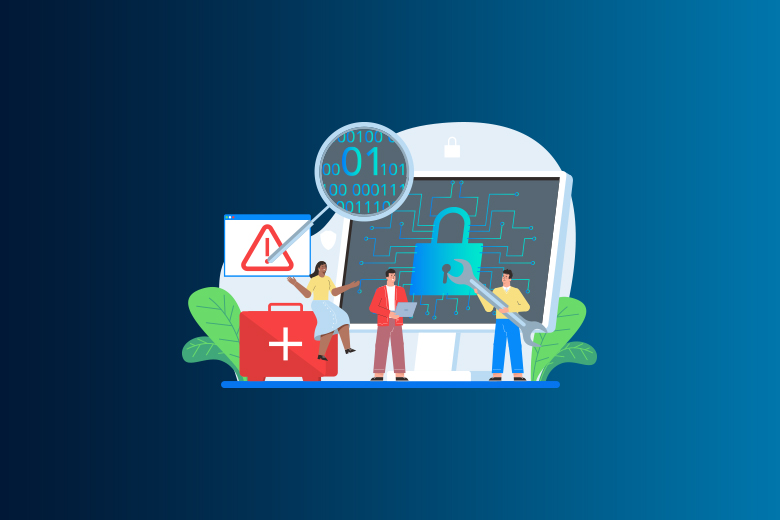18 January 2024
SafeAeon Inc.The internet used to be a sea of opportunities, but now there are secret currents of danger going through it. The Teardrop DDoS attack is one of them. It is a silent storm that can hit even the safest online ports. Teardrop seems like a thing of the past because it uses a bug in older systems to do its damage. However, its return in 2023 to target key infrastructure and financial institutions is a stark reminder that old security holes can be used to launch powerful cyberattacks.
Picture broken data packets, each one incomplete and harmful, coming at a computer. A Teardrop DDoS attack is a planned change to the internet's main communication methods that uses data as a weapon to cause a huge amount of trouble.
What is the real danger? As more people use cloud services and Internet of Things (IoT) gadgets, the number of people who could be attacked grows. Just think about this: DDoS attacks accounted for more than 26 trillion requests till 2023. This shows how important it is to have strong defenses against Teardrops and other attacks like it. There is no way to ignore this storm. If the Teardrop attack works, it can cost a lot of money because services will go down, hurt your image because of the downtime, and even put sensitive data at risk.
But there is hope in the middle of the chaos. We can get through this digital storm if we understand how Teardrop works, secure old systems, and use modern threat reduction techniques. Come with us as we learn more about how a Teardrop attack works, look at good ways to defend against them, and plan how to make online infrastructure that can withstand storms.
What’s The Buzz About Teardrop DDoS Attack In 2024?
Recently, there has been a lot of talk on the internet about Teardrop DDoS attacks. It's like a bad guy from the past coming back to life. It started in the 1990s, but its power is still strong in 2024. Most systems can't handle the transfer of big amounts of data from another source at the same time. As a result, data is often broken up while in transit, and the system that receives it puts it back together based on software rules that have already been set.
Networks set Maximum Transmission Units (MTUs) that tell you how much data they can handle at once. Networks usually have a maximum of 1,500 bytes. If the info goes over this limit, the following steps are taken:
- Fragmentation: Either the device that sent the data or its servers break it up into smaller pieces called datagrams.
- Transmission: These pieces are then sent to their destination, along with labels that show the order in which they should be put back together.
- Reassembly: The receiving server gathers all of these pieces. As soon as all the parts are received, the system puts together the original message so it can be sent.
- On the other hand, some older working systems are broken. They have trouble putting things back together, especially when there is a small overlap in the data bits.
Because of this, the system gets stuck and then crashes. When a server crashes, it stops providing services, so customers and employees can't get to important tools or do important work.
The main reason everyone is talking about Teardrop is this:
- "The Comeback Kid": Do you remember Tamagotchis and dial-up modems? Yes, that's when Teardrop first showed up, taking advantage of a flaw in old internet standards. Now, though, it's back with a vengeance. Why? Because many important systems, like banks and hospitals, still use older software, Teardrop was able to get in through a back door.
- The Silent Storm: Teardrop isn't flashy like other ransomware strikes; it's quiet. It sends scattered data packets that make computers lose their way and drown in a sea of data. It's like trying to drink from a firehose, which is what Teardrop does to computers, causing them to go down and cause chaos.
- The Growing Threat: Teardrop made a lot of noise in 2023 when it went after financial companies and cloud platforms. The buzz is still going strong in 2024. Since cloud and IoT gadgets are being used more and more, the area that could be attacked is bigger than ever. It looks like Teardrop has a lot of weak methods to choose from.
- The Popular Defense: Don't worry! People who work on internet security are always coming up with new ideas. To fight Teardrop, people can patch weak systems, use advanced filtering methods, and even set up defense systems that are driven by AI. It's a group effort, like using high-tech fly swatters to get rid of digital flies.
- The Point: Teardrop is an old song, but it's not a good one. It serves as a warning that old security holes can be very dangerous. Of course, there are lots of defenses out there, which is good news. Remember that in a digital storm, information is power, so keep your software and security systems up to date.
Don't forget that the internet should be a safe place, not a place where bad things happen. So, let's keep the talk about Teardrop about spreading knowledge and stopping harm, not about scare and damage. We can make the internet safe so that even the oldest tricks can't break it if we all work together.
How To Prevent Teardrop DDoS Attack?
Teardrop DDoS attacks can be scary, but they don't have to make you feel lost. Here are some important things you can do to keep your online business out of this digital storm:
- Patching the Leaks: To fix the leaks, you must first plug the holes. Get the latest security patches for all of your computers, especially those that are still using older software. Fixing those old security holes is like fixing holes in your digital armor that keep Teardrop from getting in.
- Filtering the Floodwaters: Use high-tech filtering systems to find and stop fragmented data bits, which are a clear sign of a Teardrop attack. Think of these filters as advanced nets that sift through the digital torrent and catch the bad data before it floods your computer.
- Strengthening the Shore: Use DDoS protection tools to make your network infrastructure stronger. As digital breakwaters, these tools take the force of the attack and spread out the traffic so that your server doesn't get too busy. You can think of it as spreading the waves out over a bigger beach so that they don't wash away any one part.
- Early Warning Systems: Put in place intrusion detection and prevention systems (IDS/IPS) that watch over your network all the time for strange behavior. When you even smell a Teardrop attack, these systems can sound the warning. This lets you take action before the storm gets bad.
- Knowledge is Power: Learn about the newest types of Teardrop attacks and how to protect yourself from them. Get security alerts, go to conferences in your field, and talk with other web captains about the best ways to do things. You can get around the enemy better if you know more about them.
Do not forget that defense is a team sport. Build a complete security plan with the help of your internet service provider (ISP) and security companies. You can build a strong digital haven together that can withstand even the strongest Teardrop storms. When you use these tips, your online presence will go from being an easy target to a stronghold of digital safety.
Conclusion
Finally, understanding how Teardrop DDoS attacks work is still a very important issue for network managers, cybersecurity experts, and business leaders. As we've seen, these attacks take advantage of flaws in the way systems handle scattered data, which could cause major service interruptions. Because Teardrop attacks are so specific—even small gaps in data packets can cause big problems with systems—we need to be more careful and take stronger precautions to protect ourselves. Understanding how Teardrop DDoS attacks work is only the first step for people whose job it is to protect digital assets. Complete security protocols must be put in place, systems must be kept up to date, and a proactive response plan must be in place. This means spending money on advanced intrusion detection systems, teaching employees about new cyber threats daily, and working with cybersecurity experts to come up with custom solutions.
Also, it's very important to be able to change to new threats because digital infrastructure is always changing. In the face of such sophisticated attacks, it is the most important job to keep private data safe and services running smoothly. SafeAeon can help you reduce the risks of Teardrop DDoS attacks and keep stay awake and prepared.














